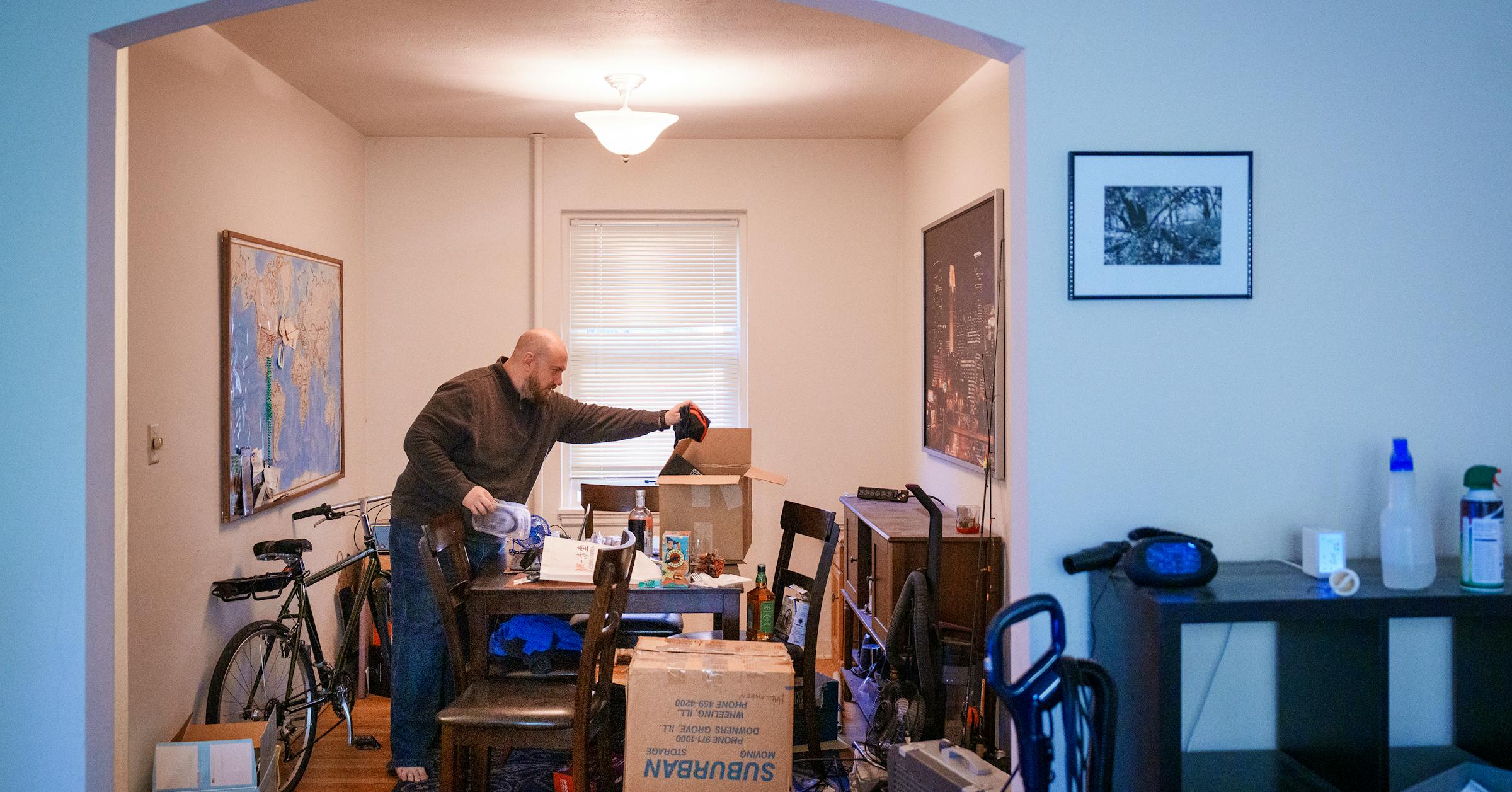Copyright Star Tribune

After years of socking away $600 a month for a down payment, Andy Testin found a $190,000 house that fit his needs. But he backed out to instead keep saving after a worrisome inspection. That was in 2017. When he started shopping again this summer, he discovered the $70,000 he managed to save was barely enough to offset soaring house prices. After being outbid twice, he caught a break this fall and was able to buy a tidy two-bedroom house in Lauderdale for slightly less than its $275,000 list price. Buying a house historically has been a means of entering and remaining in the middle class. But new data shows that in broad swaths of Minnesota, including all of the Twin Cities metro and some rural counties, a potential buyer would need to make more than $100,000 to afford a median-priced home. The median household income in the state is more than $10,000 less than that, meaning many Minnesotans are priced out of not only the housing market but also a key part of the American dream. The share of Americans in the middle class and the income they hold have shrunk in the past half century, according to a Pew Research report last year. Pew defined a middle-income household as one earning between two-thirds and double the national median household income: A number that recent U.S. Census data showed has been flat at around $83,000 in recent years, including pre-pandemic. In Minnesota, the median household income has fallen relative to inflation, landing at about $87,000 last year. White and Asian earners tend to make more, while Hispanic, Black and American Indian earners tend to make less. Meanwhile, home prices in Minnesota have risen every month this year. The median price broke $400,000 for the first time this summer. That has outpaced incomes and caused affordability to fall to its lowest level in decades. “While the home I’m buying should be affordable for me, I worry about what might happen if the economy takes a downturn, and I’m forced to accept a pay cut,” he said. “It still feels like stability is slipping further out of reach.” Obtaining a college degree is one marker. For nearly a century, after government investment following the Great Depression and World War II made homeownership accessible to more Americans, buying a house has been another. But as homeownership wanes in Minnesota and across the country, it’s possible that achievement could become a relic of a bygone era. And with it, the very idea of what it means to be middle class in America. “I can see a scenario where our definition of the middle class and its coupling with homeownership frays,” Allen said. “In recent decades, it’s become much more difficult for people who, probably from an economic perspective, think of themselves as middle class, and they’re surprised to look around and find that this goal of homeownership — that they’ve grown up believing and their parents attained — doesn’t really seem reasonable or possible for them given their current economic situation.” A recent U.S. Bank survey found Americans still tend to see homeownership as a key marker of financial success but also feel powerless in an economy they said influences whether they’re able to accomplish that goal. “Especially for younger people, they’re giving up on some of those dreams of owning a home and starting a family due to the cost itself,” said Sarah Darr, the bank’s head of financial planning. “Not because it’s not a priority but because they don’t feel like they can afford it any longer.” Listings are rising nationwide, but that hasn’t been the case in the Twin Cities metro this fall, where listing inventory at the end of every month has fallen or remained flat. That’s stifled sales and caused prices to rise. It’s not just middle-income buyers struggling in the market. Not only did the Twin Cities have a deficit of several thousand affordable listings for buyers with a $75,000 income, but there were barely enough listings to satisfy buyers with a six-figure income, according to a Realtor.com analysis. They thought they’d stay five years. But 13 years later, they’ve more than doubled their household income and are struggling to find a bigger house for their family of five. Korpela, 40, said they’d like to buy in the Stillwater area, where they have family and their kids are in school. But in just a few years of searching, he said, they’ve seen listing prices jump hundreds of thousands of dollars. “We’re very fortunate to be even thinking about it, so I don’t want to make it sound like ‘woe is us’ because that’s not our mindset,” Korpela said. “But at the same time, we are just floored at what it takes, and we continue to look at each other as, well, we have pretty good jobs, we have a pretty good lifestyle. But how can a normal family continue this pace?” “This is what coastal cities have been experiencing for many years, where buying a home was simply not affordable,” said Andrew Babula, director of the real estate program at the University of St. Thomas. Babula said homebuilders are scrambling to meet the needs of families who can no longer afford a typical single-family house. That includes building more affordable houses, like those without basements. Twin homes and townhouses, which typically are less expensive because they require smaller lots, also are on the rise. For Starlon Pruitt, breaking into homeownership means working two jobs and more than 80 hours a week. With a budget of about $400,000, roughly the median price of homes in the Twin Cities metro, the first-time buyer spent all spring and summer shopping for a house that’s in good condition and in a solid neighborhood. Frustrated with his choices and the competition, he even considered buying a duplex that would enable him to use the potential rental income to help qualify. But with so many investors in the market, he’s decided to pause his hunt until January, when there will be fewer buyers and hopefully more listings, he said. Jessie Bauldry/Gensler Designers from Gensler built a conceptual model for a new arena in the Warehouse District to spark conversation and encourage visionary thinking for what the next Timberwolves/Lynx home could be.



